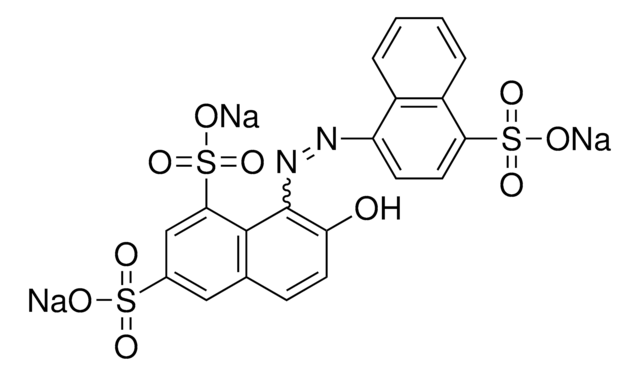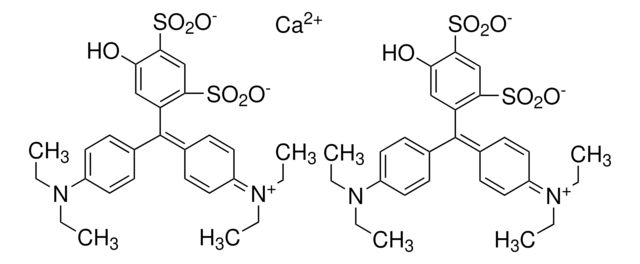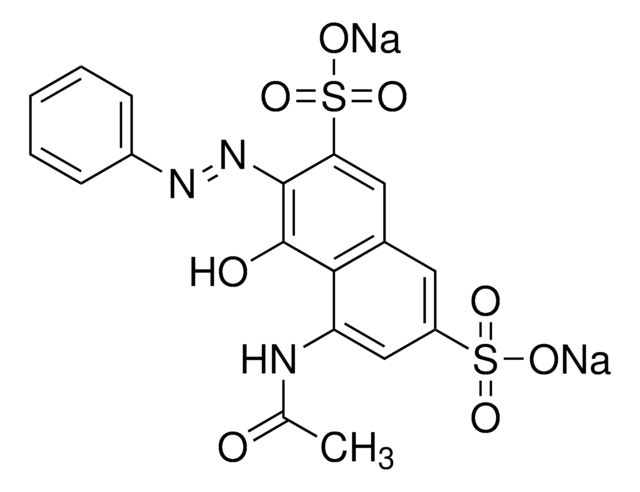214515
Chromotrope FB
Dye content 50 %
Synonym(s):
Acid Red 14, Disodium 4-hydroxy-3-[(4-sulfo-1-naphthalenyl)azo]-1-naphthalenesulfonate, Mordant Blue 79
About This Item
Recommended Products
form
powder
composition
Dye content, 50%
mp
275 °C
λmax
383 nm
515 nm (2nd)
ε (extinction coefficient)
≥14500 at 513-519 nm in H2O at 0.03 g/L
≥33000 at 214-220 nm in H2O at 0.03 g/L
≥9000 at 320-326 nm in H2O at 0.03 g/L
application(s)
diagnostic assay manufacturing
hematology
histology
storage temp.
room temp
SMILES string
[Na+].[Na+].Oc1c(cc(c2ccccc12)S([O-])(=O)=O)\N=N\c3ccc(c4ccccc34)S([O-])(=O)=O
InChI
1S/C20H14N2O7S2.2Na/c23-20-15-8-4-3-7-14(15)19(31(27,28)29)11-17(20)22-21-16-9-10-18(30(24,25)26)13-6-2-1-5-12(13)16;;/h1-11,23H,(H,24,25,26)(H,27,28,29);;/q;2*+1/p-2/b22-21+;;
InChI key
YSVBPNGJESBVRM-ZPZFBZIMSA-L
Looking for similar products? Visit Product Comparison Guide
Application
Biochem/physiol Actions
Storage Class Code
11 - Combustible Solids
WGK
WGK 2
Flash Point(F)
>437.0 °F
Flash Point(C)
> 225 °C
Personal Protective Equipment
Certificates of Analysis (COA)
Search for Certificates of Analysis (COA) by entering the products Lot/Batch Number. Lot and Batch Numbers can be found on a product’s label following the words ‘Lot’ or ‘Batch’.
Already Own This Product?
Find documentation for the products that you have recently purchased in the Document Library.
Customers Also Viewed
Our team of scientists has experience in all areas of research including Life Science, Material Science, Chemical Synthesis, Chromatography, Analytical and many others.
Contact Technical Service













